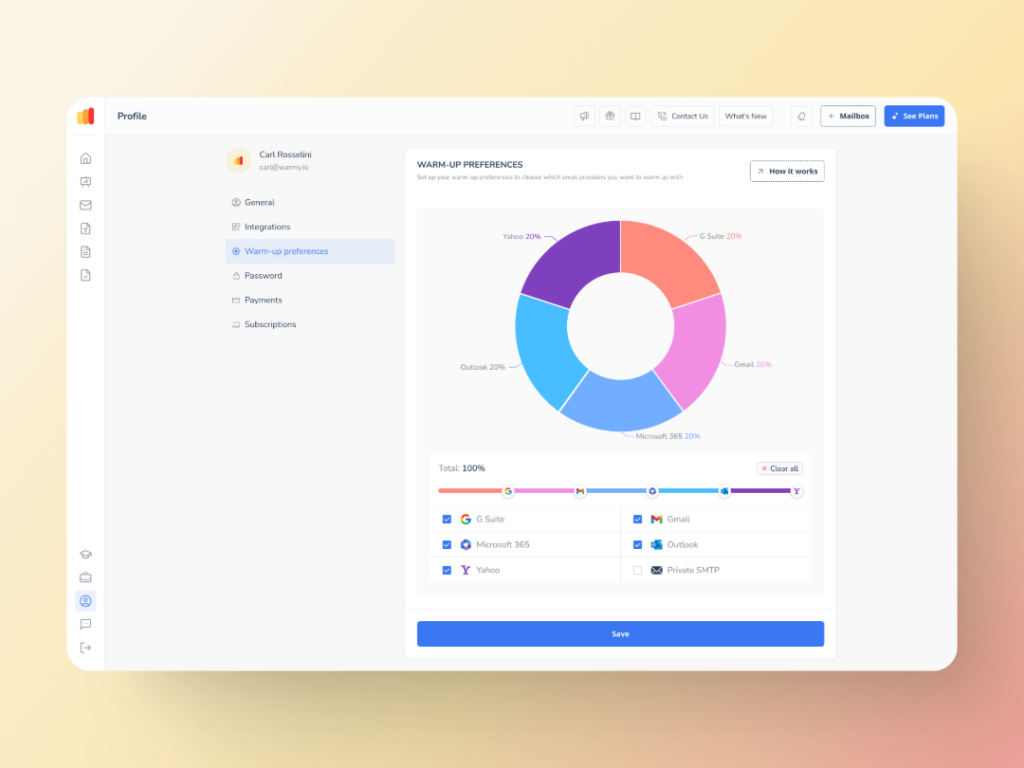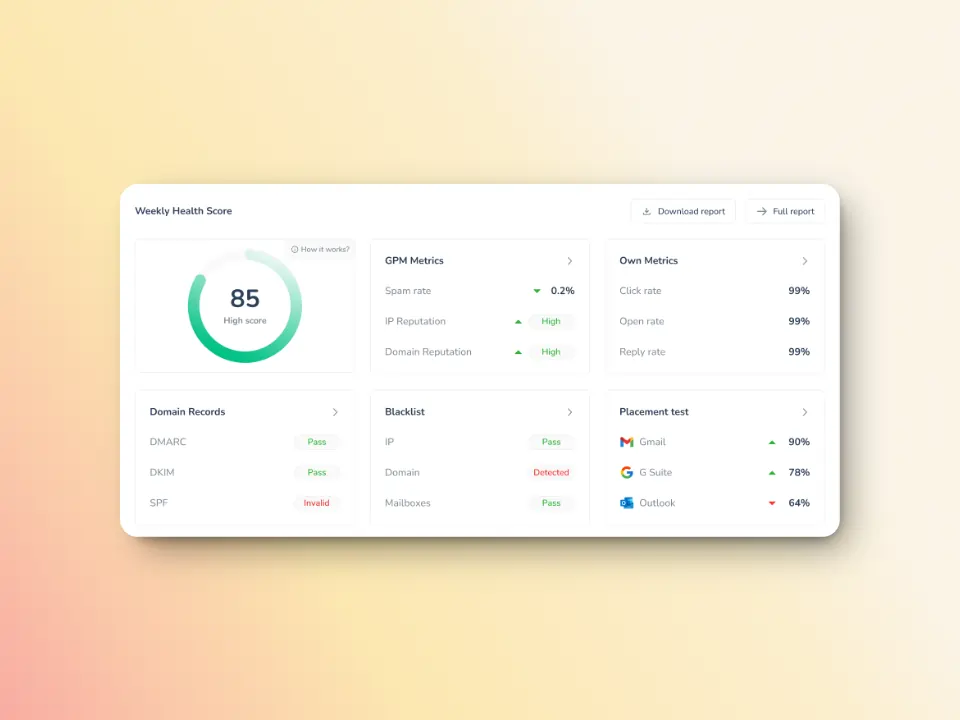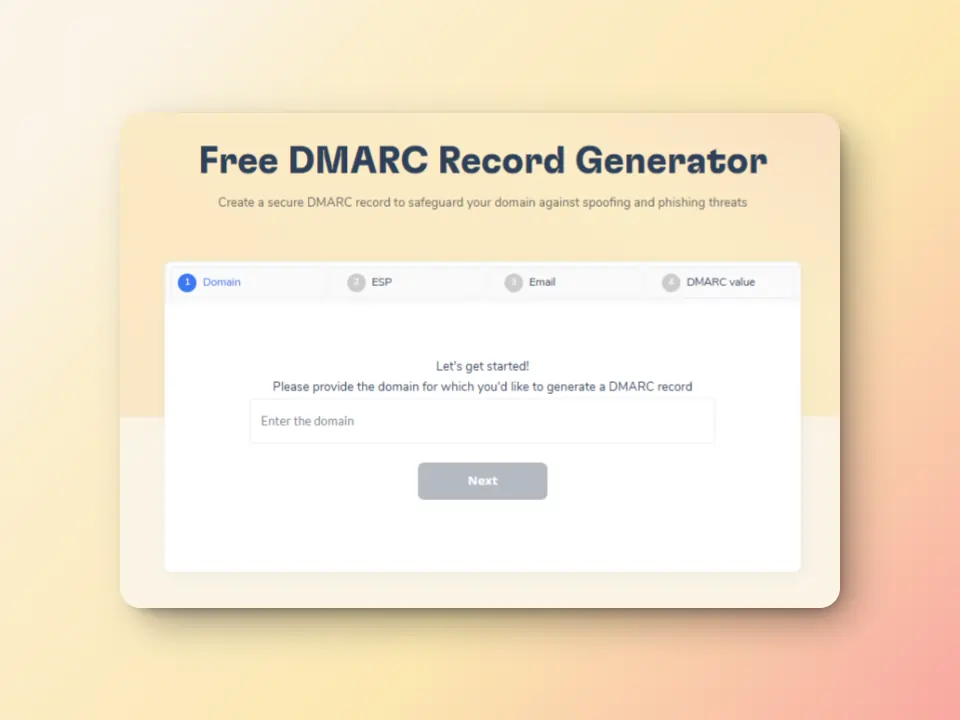The truth is, that most of the people that get into marketing are not big math lovers. Numbers, formulas, and equations can feel like a language you would rather not learn when you would rather be writing compelling messages or building relationships.
Naturally, marketers are much more keen on math when it exposes things like:
- The ROI for email marketing is $36 per $1 spent.
- There are approximately 4.6 billion email users in the world in 2025
- 59% of consumers admit promotional emails are a big factor in their purchase decisions
What do these numbers mean? And the answer is simple—email marketing delivers business growth. That’s why when it comes to email marketing it really helps to understand a little bit of what we call “mailbox math.”
We’ll break down the math behind email sending volumes and show you practical strategies for pacing your campaigns to maximize deliverability. Plus, we’ll introduce how automation tools like Warmy’s mailbox calculator can take the guesswork out of the equation, helping you send smarter and safer—even if math isn’t your favorite subject.
What is mailbox math?
Mailbox math is the sum of the numbers and variables that marketers factor in to figure out exactly how much mail is “too much” without hurting their email sender reputation or deliverability. It’s the “science” of pacing your email sends and making sure you hit enough prospects—but not too many to trip spam filters.
Q: What are spam filters?
A: Spam filters are used by email service providers to detect and block unwanted or suspicious emails from reaching users’ inboxes.
Volume also affects how the email domain is viewed by email providers. Sending a high volume of email messages from a new (cold) domain to a completely new audience might trigger suspicions with providers, who will either send your messages to spam or not deliver them at all. And on the flip side—if you send too few emails and only every few weeks or months, you don’t build a good enough sending history or engagement.
Understanding mailbox math will let you manage your sending volume based on your domain age, list quality, engagement rates, etc., as well as based on the limits of the receiving servers. You can then “do the math” and plan the sending frequency that incrementally builds trust with ISPs while increasing your chances of landing in your subscribers’ inbox.
Too much, too soon: The risks of sending too many marketing emails too quickly
Sending too many emails too fast may seem like a good way to make the most out of email marketing campaigns—but it can just as easily do more harm than good. Internet Service Providers (ISPs) monitor sending patterns closely and are quick to flag sudden spikes in volume as suspicious behavior. Email marketers must have a clear view into the dangers of aggressive sending to protect your sender reputation and make sure your target recipients receive your emails.
Spam filters can be activated by high volume sending
When ISPs detect a sudden surge in email volume sent from a domain or IP address, they often respond by throttling or blocking that traffic. A spike can appear a lot like spam or abusive behavior—especially if it comes from a relatively new or inactive sending domain. As a result, your emails may be diverted to spam folders or rejected outright.
Examples of volume-related deliverability issues include:
- A new campaign blasting thousands of emails overnight, only to see open rates plummet and bounce rates spike.
- Sudden volume increases triggering spam filters on major providers like Gmail or Outlook, causing delays or dropped emails.
- You are giving your subscribers something they did not ask for and are not expecting. Hence, you are annoying them with a barrage of emails, driving up your spam complaints and generally making a negative impact on your brand.
🔖 Related Reading: Complete guide – how to send bulk emails without spamming
Damage to sender reputation and recovery time
Reputation and deliverability go hand in hand. Once flagged, your sender reputation can suffer significant damage. ISPs use your reputation scores to help determine where your emails land: good scores improve your chances of landing in the inbox and poor scores send your emails in the spam folder.
The fact is there is no quick fix. Rebuilding your damaged sender reputation will take time. While you’re doing so, your campaigns are converting at only a fraction of their potential.
Aggressive sending mistakes can cost you more than just immediate campaign failure. They may result in being blacklisted by email providers or third-party spam databases, requiring complex and time-consuming delisting processes. The longer it takes to recover, the more business opportunities you lose.
The consequences of sending too few emails
While sending too many emails too quickly can cause email deliverability issues, sending too few can also hold your email marketing campaigns back. The key, as with most things, is balance. So what happens if you’re too conservative?
- Your campaigns and marketing ideas will have limited reach—rendering your growth potential stunted.
- Sending low volumes of emails essentially restricts the number of people you reach. This slows down your overall lead generation efforts and sales growth.
- Not sending emails regularly limits the data you collect about your recipients, making it harder to optimize your email campaign efforts effectively.
- Without enough volume, your business may struggle to gain traction and establish a solid online reputation.
Best practices for finding your ideal sending volume
Sending the right volume of emails is a delicate balancing act. Send too many too quickly, and you will risk your messages ending up in spam folders—or, even worse, you’ll harm your sender reputation. Send too few, and your reach is limited, growth slows, and opportunities are lost.
Pace your sends with gradual ramp-up strategies
Gradually increase your sending volume over a longer period of time to establish trust with email providers without looking suspicious. Instead of sending many emails suddenly, start small and gradually increase your volume. Leverage your engagement data like bounce rates and spam complaints to tailor your pace, so you never overload your domain. This is what it takes to improve your deliverability and sender reputation.
Here’s also a reminder to be patient. Warming up takes time, and it can differ in length depending on the industry and other factors. For example, here are some resources on how long it usually takes to warm up an email domain for SaaS companies, cybersecurity companies, and fintech companies.
Tips for safe ramp-up:
- Start with a low daily send volume and increase it by no more than 10-20% every few days.
- Pause or slow the ramp-up if bounce rates or complaints shoot up.
- Maintain a consistent sending schedule and implement best practices to improve email deliverability.
- Use warm-up tools to automate volume increases safely.
🔖 Related Reading: The Science and Process of Warming Up Newly Created Email Domains is a report from the Warmy Research Team which discusses an experiment they conducted to examine how different warm-up strategies affect the deliverability of emails from newly created domains.
Segment your email lists for better control of variables
Segmenting your email list helps you to specifically target who to send certain type of messages to while controlling the volume sent to each group. This results in higher engagement and less chances of spam complaints or bounces caused by irrelevant content. And if you’re on the fence about doing the extra work to segment your customer base, here’s some math to convince you: marketers saw a whopping 760% revenue increase due to segmented campaigns.
Effective segmentation techniques include:
- Separating active and inactive subscribers for tailored sending frequencies
- Grouping contacts by demographics, location, or job role for personalized messaging
- Creating segments based on past purchase behavior or engagement levels
- Using engagement scores to focus on highly engaged recipients first during ramp-up.
Monitor your email key metrics to adjust volume
Tracking key email performance metrics is essential to guide your sending volume decisions. These metrics impact your email deliverability and act as signals that your volume is either appropriate or needs adjustment. Regularly monitoring these metrics lets you react quickly to deliverability challenges and optimize your sending strategy.
- Bounce rate: The percentage of emails that fail to deliver. A rising bounce rate can indicate list quality issues or sending volume problems.
- Open rate: The percentage of recipients who open your emails. Declining open rates may signal deliverability issues or disengaged audiences.
- Spam complaints: When recipients mark your email as spam. Increasing complaints hurt your sender reputation and should prompt a review of sending volume and content.
How Warmy’s Mailbox Calculator simplifies mailbox math
Managing email sending volumes can be complex, especially when balancing growth goals with deliverability. Automation tools like Warmy.io’s Mailbox Calculator take the guesswork out of this process by using real data and smart algorithms to recommend the ideal number of domains and mailboxes you need based on your daily sending requirements.
Automating sending volume calculations saves time and reduces errors that can come from manual estimation. Marketers can focus more on crafting effective content and targeting prospects while Warmy.io manages the technical side of deliverability optimization.
Using Warmy.io to automate the warmup process

Beyond recommendations, Warmy’s AI-powered email warmup gradually increases your sending volume according to your domain’s health. This ensures a smooth ramp-up, helping you build a positive sender reputation without manual intervention.
Automated warm-up helps prevent sudden volume spikes that trigger ISP filters. By controlling the pace and pattern of email sends, Warmy.io keeps your reputation intact, allowing you to send more emails confidently over time and ensure your emails land in the inbox. Warmy continuously monitors mailbox activity and engagement signals. If it detects any signs of deliverability stress—like increased bounces or complaints—it automatically slows down the sending pace to protect your domain from damage.
Due to its organic and genuine engagement it sends a signal to ISPs that your email is trustworthy faster than the traditional warm-up process.
How Warmy helps beyond automating the warmup process
While automating your email warmup is critical for building a solid sender reputation, Warmy offers much more to support your quest for high deliverability rates. From advanced monitoring and insights to smart tools that help you optimize your campaigns, Warmy goes beyond simple volume management to give you comprehensive control over your email performance.
Warmup Preferences

Warmup Preferences enables senders to take the warmup process to a higher level by providing tools to customize and fully control the warmup process from both sender and user levels.
Senders will be able to customize the warmup’s distribution across different providers. They can also choose if they want to use B2B or B2C customers for engagement patterns so the warmup process is tailored to their business type. All of these settings can be changed right within the Warmy system for hassle-free customer experience.
Advanced seed lists

Warmy.io’s Email Seed List injects a more human-like approach that sends strong positive engagement signals to different email providers, and consists of real active email accounts ranging from Premium Google, Outlook, and Yahoo.
These accounts or seeds ensure authentic engagement unlike traditional static seed lists. What do we mean by this? Your emails are opened and scrolled through. Links are clicked. Emails are marked as important. And in the event an email gets sent to spam, it is manually removed and marked as important to let ISPs know your emails are legitimate.
Domain Health Hub

The Domain Health Hub basically gives an inside look into what’s happening with your warm-up process and deliverability rate. It provides a domain-level health dashboard with the following features:
- A domain health score which is calculated based on authentication, blacklist status, and inbox placement tests.
- Monitor your spam rate trends and overall deliverability performance with weekly or monthly tracking options.
- Comprehensive DNS status checks to easily validate SPF, DKIM, DMARC records for stronger authentication & security.
- Optimized multi-domain monitoring for easier management all their domains from one dashboard
Free SPF and DMARC Record Generators

Failing email authentication checks is one of the top reasons why emails get rejected. To further optimize your warm-up process to improve your email deliverability, take advantage of the following free tools:
- SPF Record Generator helps you generate a valid SPF record in seconds—just enter your domain and email provider.
- DMARC Record Generator helps you create a valid DMARC record based on your email security needs.
Master your sending volume with Warmy.io
Optimizing your email sending volume is a critical step to maintaining strong deliverability and maximizing the success of your campaigns. Understanding mailbox math and pacing your sends carefully helps you avoid the common pitfalls of over- or under-sending.
Warmy simplifies this entire process with our Mailbox Calculator. Combined with our full suite of deliverability tools, Warmy equips marketers with everything they need to send smarter and grow faster.
Don’t let guesswork or fear hold you back. Start mastering mailbox math today and safeguard your campaigns with Warmy. Sign up now for a free trial and start sending smarter, delivering better, and growing your business with confidence.











